Name Jose Delgado | Role Political leader | |
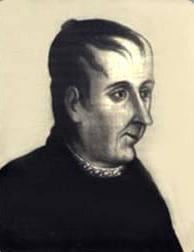 | ||
Education Universidad de San Carlos de Guatemala Parents Ana Maria de Leon, Pedro Delgado | ||
Jose matias delgado el lider criollo 2004
José Matías Delgado y León (February 24, 1767, San Salvador – November 12, 1832, San Salvador) was a Salvadoran priest and doctor known as El Padre de la Patria Salvadoreña (The Father of the Salvadoran Fatherland). He was a leader in the independence movement of El Salvador from the Spanish Empire, and from November 28, 1821 to February 9, 1823 when he was president of the Central American constituent congress which met in Guatemala City.
Contents
- Jose matias delgado el lider criollo 2004
- Efemerides bicentenario jose matias delgado
- Early years
- Independence movement
- As head of state of El Salvador
- Later life
- Legacy
- References
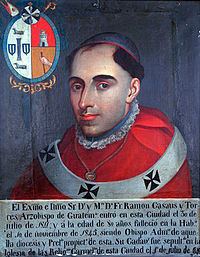
Efemerides bicentenario jose matias delgado
Early years
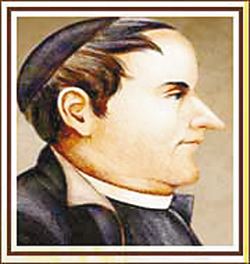
Delgado studied civil law, canon law, and theology in Guatemala at Tridentino Seminary, earning a doctorate from the University of San Carlos de Guatemala. He was ordained a priest, and returned to El Salvador, where from August 12, 1797 he was provincial vicar of San Salvador. He was intensely involved in pastoral work. In 1808 he began the reconstruction of the old Parochial Church of San Salvador (today El Rosario Church), which was finished a decade later.
Independence movement
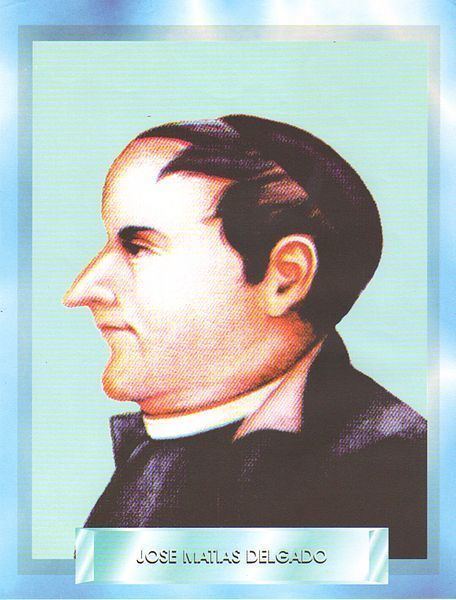
In San Salvador he became a leader of the movement for independence. Together with his nephew Manuel José Arce he was among those who issued the first Cry for Independence in Central America, on November 5, 1811 in San Salvador. On this date he is said to have rung the bells of the Church of La Merced, as a public cry for liberty. The rebellion began with the confiscation of 3,000 guns and the funds in the royal treasury. The provincial intendant, Gutiérrez de Ulloa, was removed, as were most governmental employees.
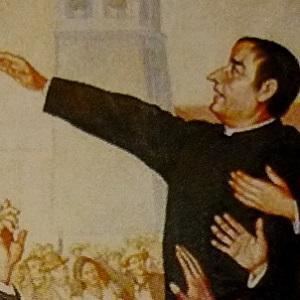
The rebels held the government for nearly a month before royal authority was restored from Guatemala. Delgado's brothers Juan and Miguel were also members of the independence movement.
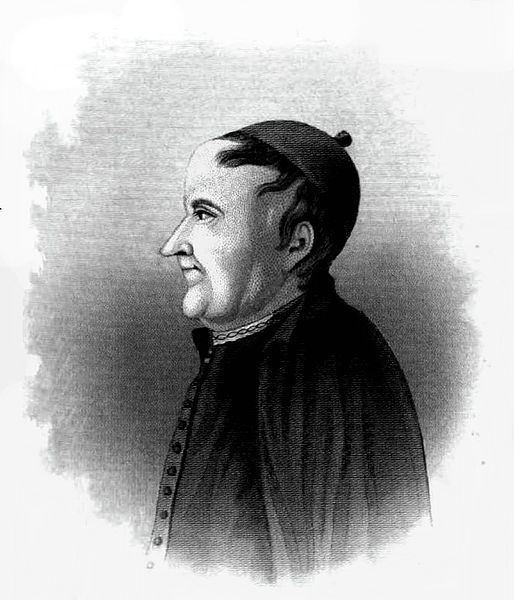
In 1813 Delgado was elected a provincial deputy to the council in Guatemala City. He also became director of the Tridentino Seminary there. He was not in El Salvador at the time of the second insurrection in 1814, and did not take part in it.
He was elected provincial deputy again in 1820, and on September 15, 1821, he was among those who signed the Act of Independence of Central America in Guatemala City. On November 28, 1821 he became political chief of the province of San Salvador.
As head of state of El Salvador
When the Central American governmental junta voted to join the Mexican Empire (January 5, 1822), Delgado (and many other Salvadorans) opposed this. On January 11, 1822 in San Salvador, the city government, presided over by Padre Delgado, and many members of the public protested the decision. Also on January 11, the government of El Salvador seceded from Guatemala in order to remain outside the Mexican Empire.
In April 1822 Colonel Manuel Arzú, in command of Guatemalan troops, occupied the Salvadoran cities of Santa Ana and Sonsonate. On June 3, 1822, Arzú entered San Salvador, reaching the Plaza Major. Nine hours of fighting resulted in many casualties, burned houses and plundering, but the Guatemalans then withdrew. Delgado's nephew, Colonel Manuel José Arce, was one of the commanders of the Salvadoran defenders. On June 6, 1822, Salvadoran troops reoccupied Santa Ana, and later also Ahuachapán and Sonsonate.
On December 2, 1822, fearing further encroachment from Guatemala, El Salvador officially asked for annexation to the United States. A delegation was sent to the United States to negotiate.
That same month, Brigadier Vicente Filisola, Captain-General of Guatemala (within the Mexican Empire), marched toward San Salvador. He entered the city on February 9, 1823, declaring respect for people and goods, but also the annexation of the province to Mexico. This was the end of the government of José Matías Delgado.
Later life
On the fall of Mexican Emperor Agustín de Iturbide in 1823, Central America declared its independence. Delgado was elected one of the representatives to the constituent congress of the Federal Republic of Central America. This Congress met in Guatemala beginning on June 24, 1823, and Delgado was chosen to preside.
On May 5, 1824 he was named the first bishop of San Salvador by the local civil authorities and not by the Catholic Church. This entangled him in a serious and long-lasting controversy with the Archbishop of Guatemala and the Vatican authorities that lasted until his death.
In 1824 he bought in Guatemala, with public money, the first official printing press in El Salvador. It was used to publish the first Salvadoran newspaper, El Semanario Político Mercantil. The first issue appeared on July 31, 1824.
Delgado died on November 12, 1832 in San Salvador. As his funeral procession passed the Plaza Mayor, mourners showered his coffin with white rose petals. His remains are interred at El Rosario Church.
Legacy
On January 22, 1833 the National Assembly declared him Benemérito de la Patria.
The Salvadoran lawyer, educator and journalist Rafael Reyes published the first biographical study of Delgado, in December 1878. Later other Central American intellectuals, including Francisco Gavidia, Carlos Meléndez Chaverri, Ramón López Jiménez, Rodolfo Barón Castro, José Salvador Guandique and Jorge Lardé y Larín did likewise.
His name was given to the town resulting from the merger of Aculhuaca, Paleca and San Sebastián Texincal on October 23, 1935. Dr. José Matías Delgado University, the foundation of which was announced on September 15, 1977, is today located in Antiguo Cuscatlán, a suburb of San Salvador.
The National Assembly commissioned a portrait in oil for its chamber. It was made into a lithograph in New York by A. Demarest. A marble bust was installed on Avenida Inependencia in San Salvador in 1902. Another statue was donated by the German, Austrian and Swiss residents of the country on September 14, 1913. This statue was located at the Parque Arce, but the 1986 San Salvador earthquake destroyed it. There is also a statue of Delgado at the university named for him.
